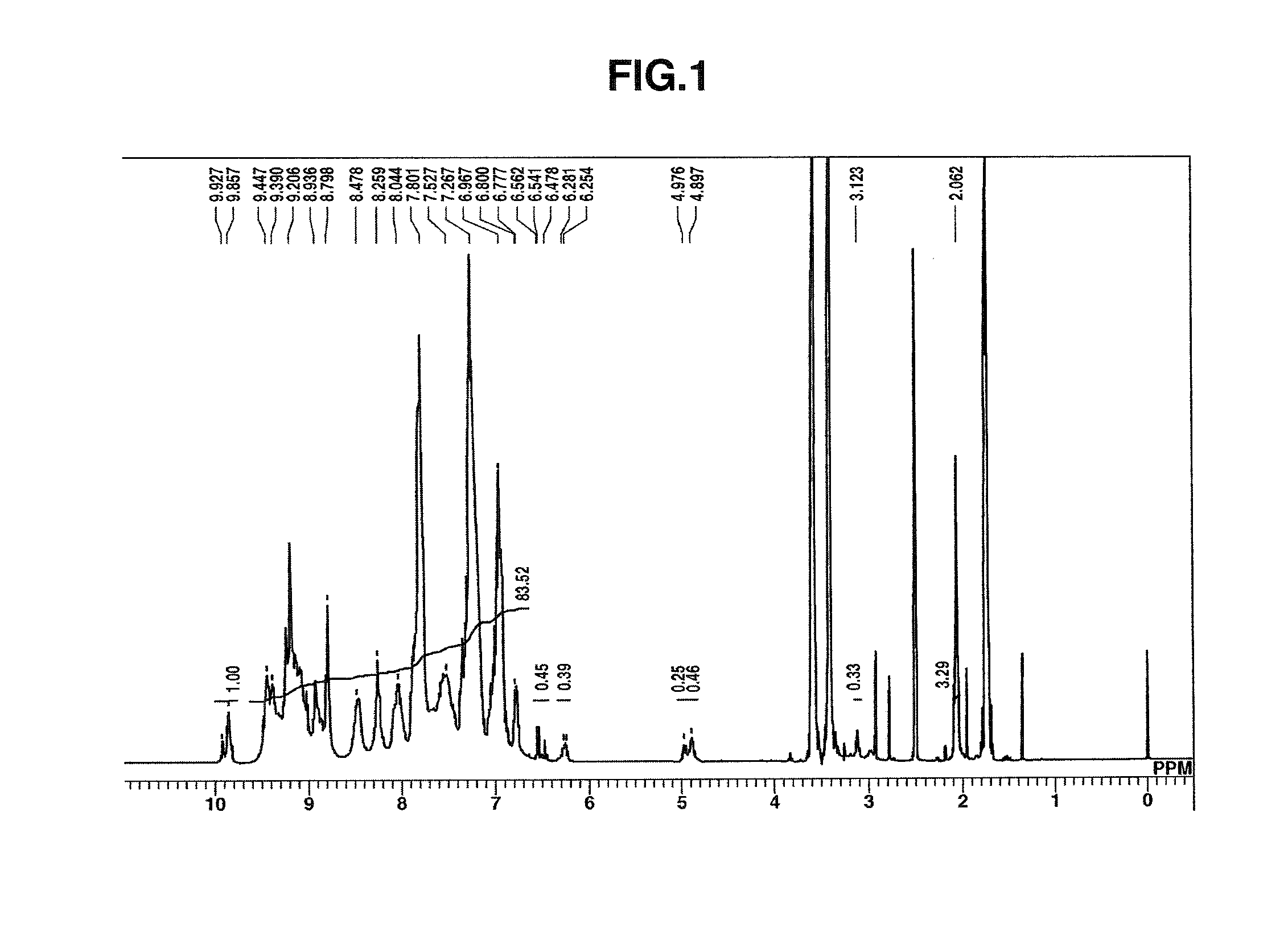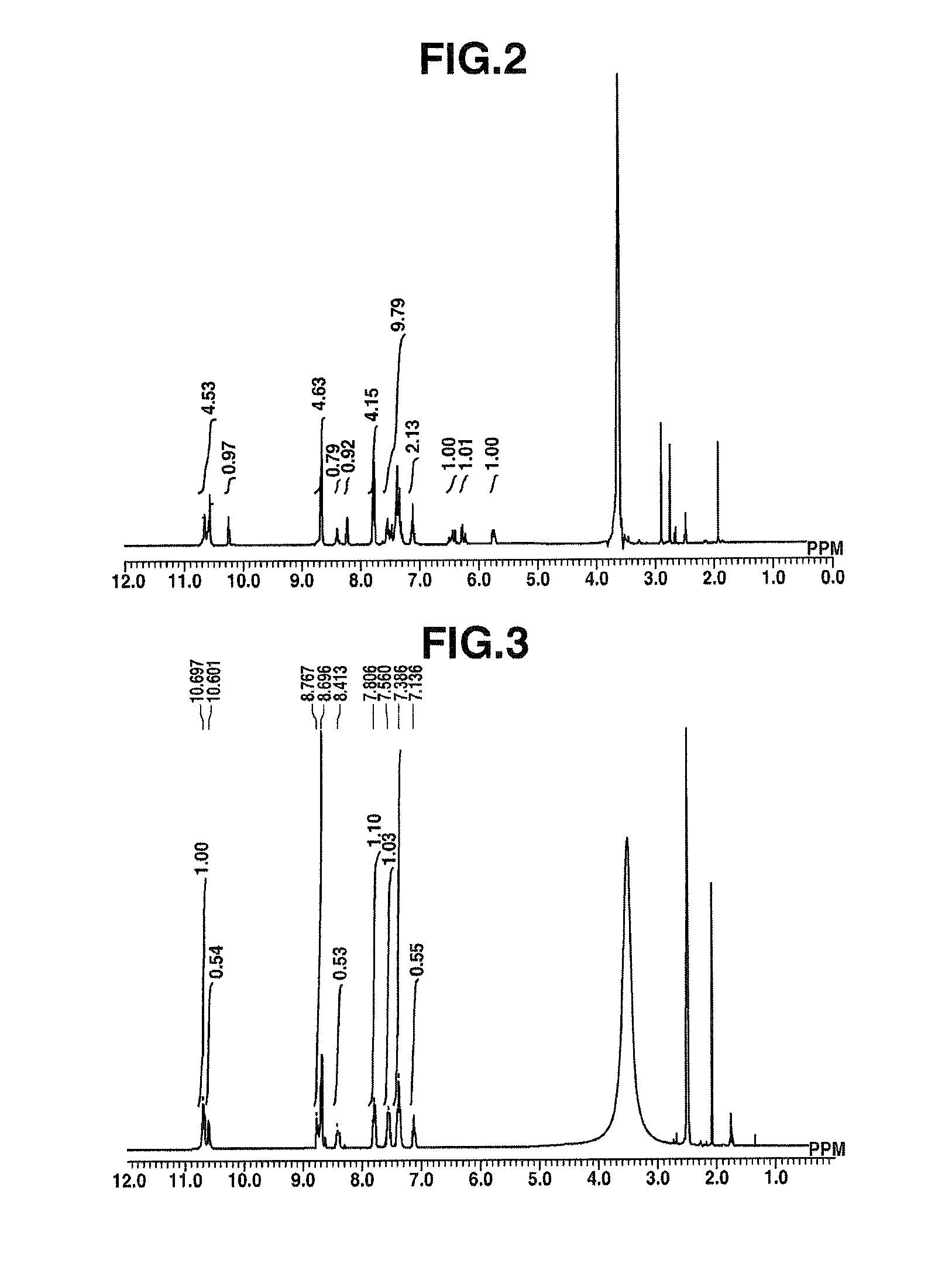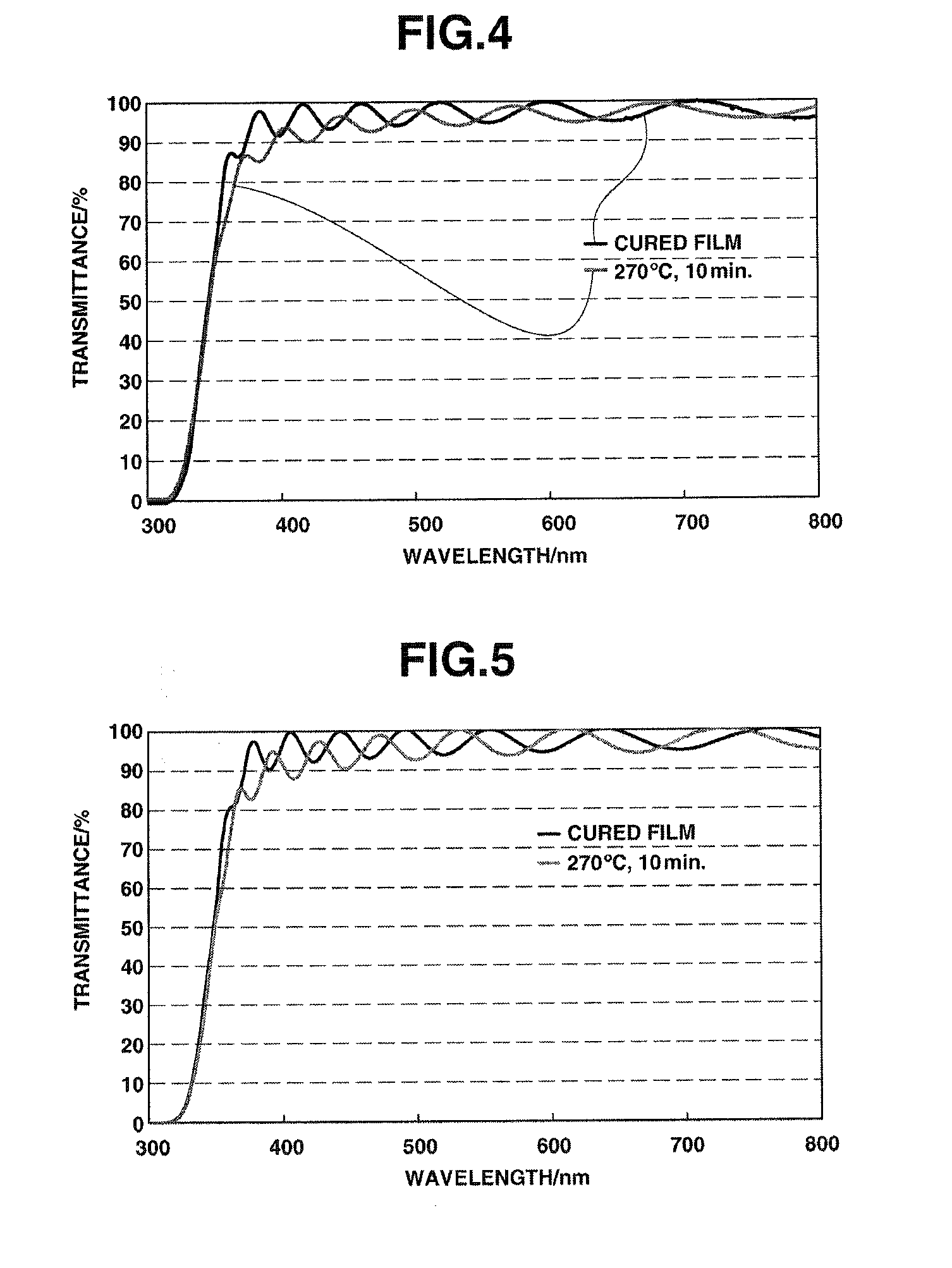Film-forming composition
a technology of composition and film, applied in the direction of polyamide coating, coating, etc., can solve the problems of low crosslink reactivity, low crosslink density of products, and often lower refractive index and heat resistance of adding a crosslinking agent, and achieve high heat resistance, high transparency, and high refractive index
- Summary
- Abstract
- Description
- Claims
- Application Information
AI Technical Summary
Benefits of technology
Problems solved by technology
Method used
Image
Examples
synthesis example 1
Synthesis of HB-TmDA
[0249]
[0250]Under nitrogen, 456.02 g of DMAc was added to a 1,000 mL four-neck flask and cooled to −10° C. in an acetone-dry ice bath, following which 84.83 g (0.460 mol) of 2,4,6-trichloro-1,3,5-triazine (Evonik Degussa) was added and dissolved therein. Next, a solution of 62.18 g (0.575 mol) of m-phenylenediamine dissolved in 304.01 g of DMAc and 14.57 g (0.156 mol) of aniline were added dropwise. After dropwise addition, the flask contents were stirred for 30 minutes, then the reaction mixture was added dropwise over a period of 1 hour using a fluid transfer pump to a reactor consisting of a 2,000 mL four-neck flask to which had been added 621.85 g of DMAc and which had been heated beforehand to 85° C. on an oil bath. Following addition of the reaction mixture, stirring was carried out for 1 hour, effecting polymerization.
[0251]Next, 113.95 g (1.224 mol) of aniline was added and the flask contents were stirred for 1 hour, bringing the reaction to completion. T...
synthesis example 2
Synthesis of HPmDA-Acry
[0255]
[0256]In a nitrogen atmosphere, a 1,000 mL four-neck flask was charged with 20.37 g (188.3 mmol) of 1,3-phenylenediamine (DuPont K.K.), 28.06 g (301.3 mmol) of aniline (Junsei Chemical Co., Ltd.) and 250.4 g of N-methyl-2-pyrrolidone (Junsei Chemical Co., Ltd.), and the system was cooled to 5° C. Separately, in a nitrogen atmosphere and within a 500 mL four-neck flask, 1,3,5-benzenetricarbonyl trichloride (40 g, 150.7 mmol, from Wako Pure Chemical Industries, Ltd.) was dissolved in N-methyl-2-pyrrolidone (250.4 g; Junsei Chemical Co., Ltd.). The solution was cooled to −20° C. and then added dropwise over 30 minutes to the above amine solution at an internal temperature of 5 to 10° C., thereby effecting polymerization. Following dropwise addition, the system was stirred at 10° C. or below for 1 hour. To this was then dropwise added 27.27 g (301.3 mmol) of acryloyl chloride (Tokyo Chemical Industry) at an internal temperature of 5 to 10° C. over a period o...
synthesis example 3
Synthesis of HPmDA
[0259]
[0260]In a nitrogen atmosphere, a 50 mL four-neck flask was charged with 3 g (11.3 mmol) of 1,3,5-benzenetricarbonyl trichloride (Tokyo Chemical Industry) and 13.3 g of N-methyl-2-pyrrolidone (Junsei Chemical Co., Ltd.), following which a solution of 0.92 g (8.48 mmol) of 1,3-phenylenediamine (DuPont K.K.) and 0.79 g (8.48 mmol) of aniline (Junsei Chemical Co., Ltd.) in 13.3 g of N-methy-2-pyrrolidone (Junsei Chemical Co., Ltd.) was added dropwise over a period of 30 minutes at an internal temperature of 12° C. and polymerization was carried out. Following the completion of dropwise addition, the flask contents were stirred for 30 minutes at room temperature, pure water (3 g) was added dropwise, followed by another 30 minutes of stirring, after which the reaction mixture was added to 450 g of pure water, thereby effecting re-precipitation. The resulting precipitate was collected by filtration, then again dissolved in a mixed solvent of 24 g of THF (Kanto Chem...
PUM
| Property | Measurement | Unit |
|---|---|---|
| refractive index | aaaaa | aaaaa |
| temperature | aaaaa | aaaaa |
| temperature | aaaaa | aaaaa |
Abstract
Description
Claims
Application Information
 Login to View More
Login to View More - R&D
- Intellectual Property
- Life Sciences
- Materials
- Tech Scout
- Unparalleled Data Quality
- Higher Quality Content
- 60% Fewer Hallucinations
Browse by: Latest US Patents, China's latest patents, Technical Efficacy Thesaurus, Application Domain, Technology Topic, Popular Technical Reports.
© 2025 PatSnap. All rights reserved.Legal|Privacy policy|Modern Slavery Act Transparency Statement|Sitemap|About US| Contact US: help@patsnap.com



